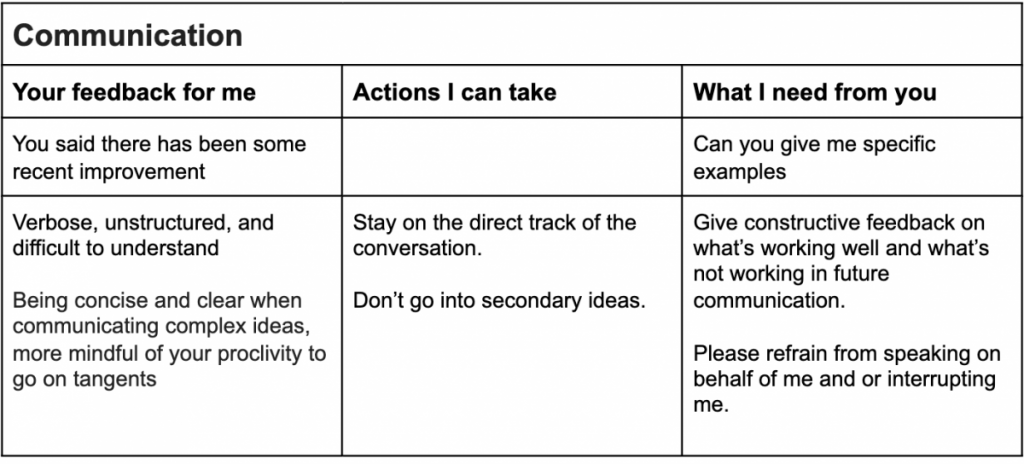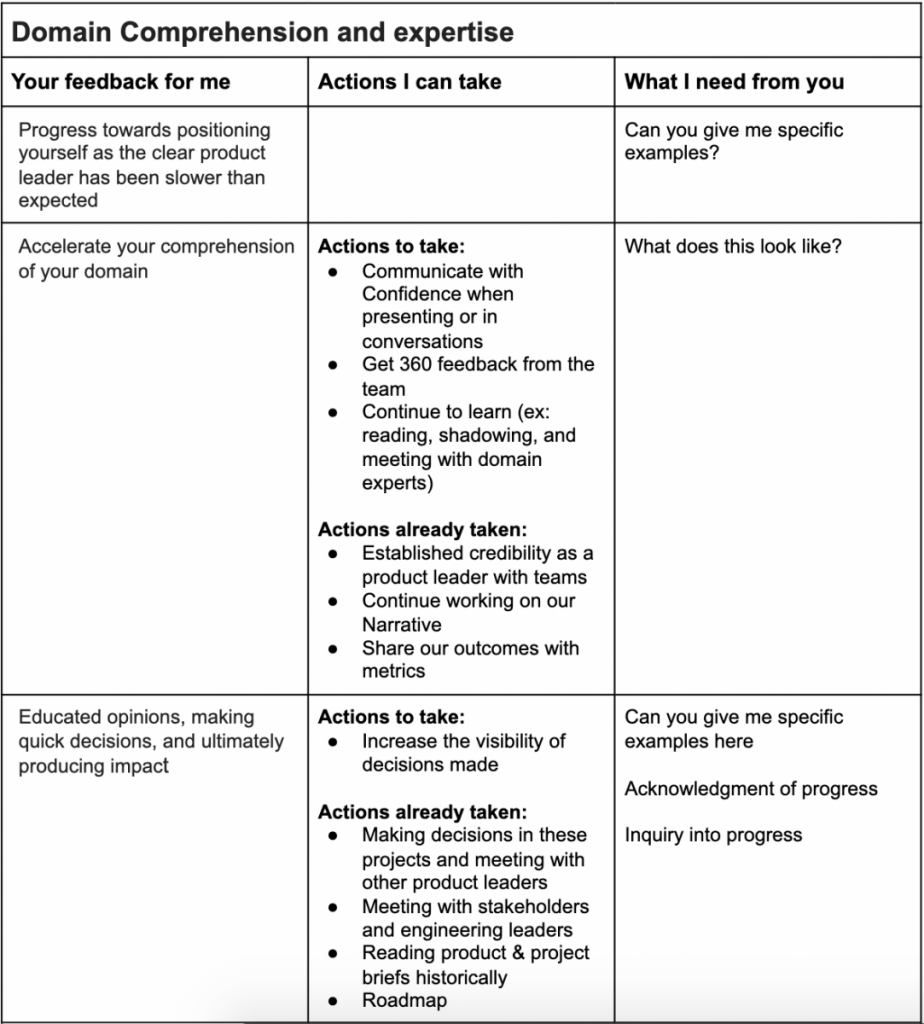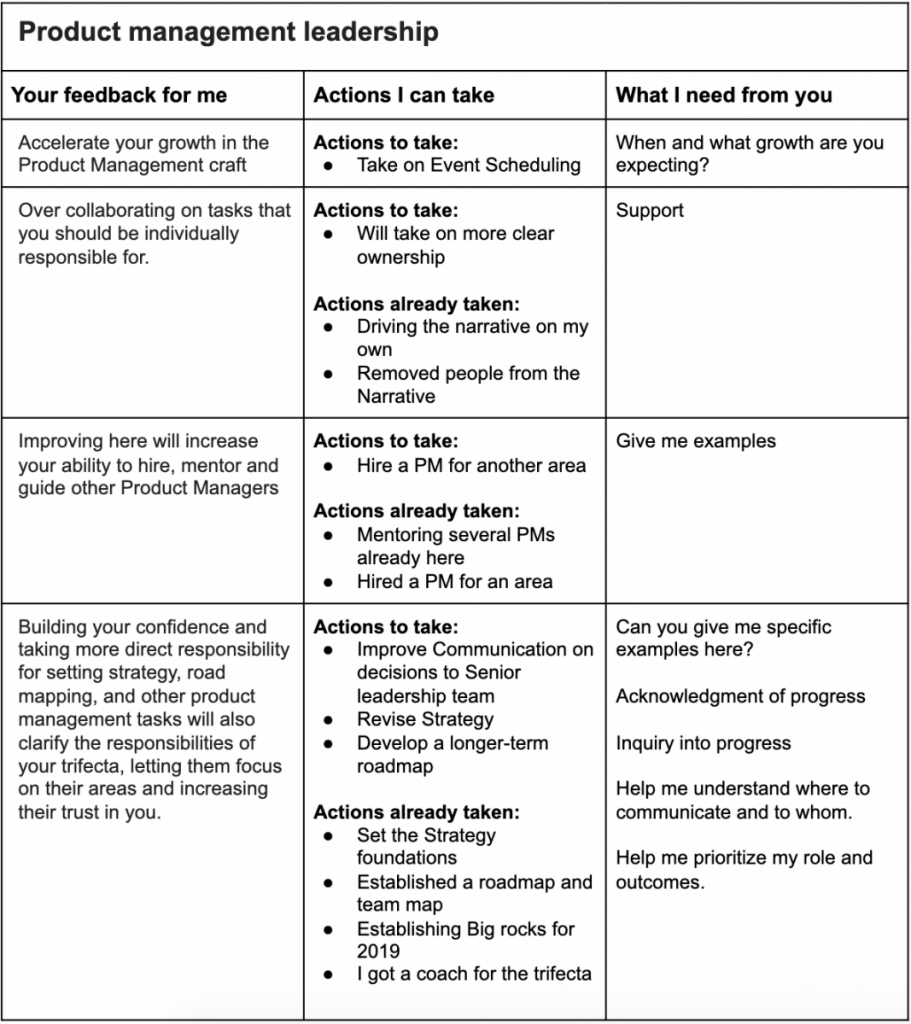My final post on “Shifts are hard” and part 5 of a series on sharing methods to cope with five simultaneous career and life shifts. Feel free to read part 1, part 2, part 3, and part 4. This post shares my personal experiences using emotional agility practices to help with multiple shifts.
The path to healing
After reaching a turning point at Shopify, I understood my role and my path towards impact. I worked with my career coach on an approach to healing. My inner critic (the judger) needed a mindset shift. A shift that would help me move beyond the negative and focus on the positive experiences. The following emotional agility exercise focused on embracing the positive.
The roadblock leads to spinning out
On the path to healing, I received organic feedback from my lead in our typical 1:1 meeting. I often managed up and had several topics I needed to cover. I explained the challenges of my triad, the progress of the product strategy, and my communication in our SLT reviews. I was struggling. I already had a few 1:1s where I broke out in tears with them. In the last six weeks, to be honest and transparent with my challenges, I asked them for help. I had enough self-awareness and I did not believe I could solve them on my own. After I covered my talking points, my lead shifted topics and said they had some feedback. They didn’t like my 27 paged strategy paper’s progress; it was too collaborative, and my communication in a few meetings was less than ideal. I agreed this feedback was not surprising –– they were all areas I had focused on improving.
At the end of that day, I received written feedback on my performance through email. It looked formal; I was shocked. I have never received performance feedback like this in my life. As a senior leader, I’ve also had to deliver many performance emails, so I know the process for these! I’m an OVERACHEIVER, so my inner critic went into hyper speed. At this point, nine months after taking this job in a platform organization at this scale, I thought I still had runway to fully onboard. However, none of this mattered when my lead had a different expectation of my performance; there are always two perspectives in play.
The email covered three areas to improve on:
Communication
Domain Comprehension and expertise
Product management leadership
The written feedback was presented formally but felt misaligned. In many areas, I didn’t have any examples of their point of view. I’m good at managing up and thought I had set clear expectations on my progress and timelines. On a positive note, their bar for me was HIGH, but my ability to hit that was unrealistic.
Once again, my monkey mind replayed what had happened…what I could have done differently, and ways to move forward. I began to write. At first, I wrote responses to their feedback line by line. Then I began to construct a framework as I realized my expectations of success were different from theirs. I also worked with my coach to shift from the emotional agility framework to responding to feedback and reviewing my writing. We discussed if I should support his feedback or defend my perspective. She suggested not defending, but being open to understanding their point of view by asking for examples or providing examples to address their feedback.
Spinning out in a parking lot
This job never felt right when I considered this role. When doing a prioritization framework, it pointed to this job. Since I did have this feeling, I sought a coach four months after joining Shopify because I always felt that my lead and I would not connect. I have more experience than my lead. Because I went against my instincts and found myself in this situation, I continued to replay the “What if,” “Could have,” and “Should of.” I usually call this the “regret cycle”. What if I had stayed in Berlin? What if I had taken the other jobs? Why did I reject this job? And so on.
These questions continued to replay in my head as I tried to defend my performance. Shifts were hard, and my family of six had finally settled from a global relocation. I was on a temp visa. We were in debt from the international move, along with a new mortgage, and student loans. My husband needed to get a job. I continued to spin on “What ifs”. What if I lose my job? How could we cover the house and student loan payments? Will they kick me out of the country? Can I even get a job in this country? I won’t even get the stocks that were to vest in a few months. Our savings were running out, and I was distraught. I had brought my family here. It’s my fault this was happening. Why would this person (my lead) bring me into this company and give me this feedback? I’m an overachiever, and I have so much experience. How did I get here? Many tears were shed, and the shifts had finally added up. I was at an all-time career low.
The U-turn
Very quickly, I made a u-turn. I was done spinning out. At this point, ten months had passed, and I will honestly tell you that I was miserable at Shopify. I was buried deep in the trenches, and I couldn’t get out. My triad was misaligned. My lead was not listening, nor was my lead supportive. Even so, I wanted to have impact and influence, so I gave it a good try. I was working 50-60 hours a week and getting nowhere. I also felt my work and my team’s work was not as good as it could be. It was not the best scenario. Despite that, I still loved the potential of my role, the domain, and the knowledge I gained.
Feedback is a gift
I did not complete the healing practice. Instead, I listened to my lead’s feedback and significantly improved my performance to meet their needs. I learned more than I could imagine and ultimately have no regrets from my experience at Shopify. I fully believe Feedback is a gift, but I’ve also learned to listen and trust my instincts.
Try It
The final practice in emotional agility concentrates on embracing the positive. Why not try this exercise and see if you need to shift away from a negative perspective? Feel free to use this healing practice template in the journal. I didn’t get to use it; instead, my u-turn led me to address the performance feedback framework. Feel free to use this feedback framework template if you want to grow from feedback. Below is a modified version of the one I created to help bring order to the village of feedback I received.
Feedback framework I used along with my message to my lead:
Do you mind if we go through feedback from your email and the next steps?
In the future, please provide frequent feedback with specific examples. This is not about my feelings. Feel free to use slack IMs, post-meeting chats, or reminders because they are all welcome.



Follow up questions for alignment and clarification:
Is there a possibility of lagging progress?
Do you need more visibility of my progress?
How much of this is our communication challenge?
How much of this is a need for more time in my role?